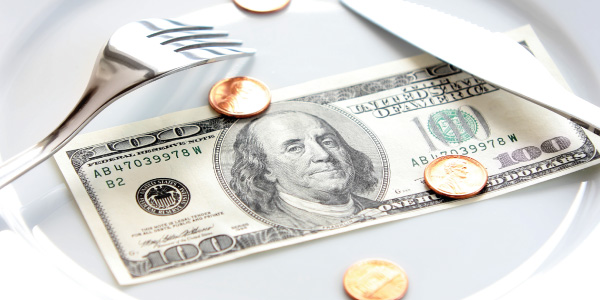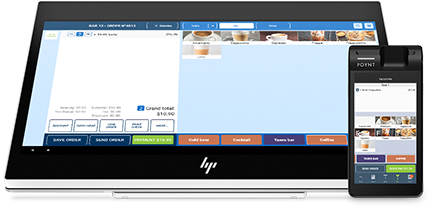
Food Cost Formula – How to Calculate Food Cost Percentage5 min read
Let’s face it, running a restaurant is tough. In fact, over 60% of restaurants fail within the first year of opening. On top of that, 80% of restaurants don’t make it past 4 years! By taking steps to better understand the food costs of your restaurant, you can significantly increase your chances of success.
Sound hard? Don’t worry, we’ve got you covered.
To help restaurant owners like yourself get a better understanding of your food costs, we’ve put together this article to walk you through exactly how to calculate the food cost percentage for your restaurant. For those of you who prefer visuals, we’ve summarized this information in an infographic at the bottom of this article.
Why is food cost control important for restaurants?
Understanding your food costs is important because it has a direct relationship with the profitability of your restaurant.
If you struggle to understand your food costs, you’re not alone. 52% of restaurant owners say that food cost control is one of the most challenging parts of operating a restaurant.
Higher than ideal food costs can easily cut into your margin and make it difficult for you to spend on other things like staff, equipment, or marketing your restaurant.
How to calculate your food cost percentage
Restaurant food costs are always presented as a percentage, and are calculated using a food cost percentage formula.
This formula helps you understand the ratio of the cost of ingredients and revenue that these ingredients generate when the dish is sold. This ratio is calculated by finding your cost of goods sold and dividing that by the sales revenue of a particular dish.
The formula for this calculation looks like this:

The steps to apply the above formula are as follows:
- List the food supplies received at the beginning of the week.
- Add together the dollar value of each item in a dish.
- Track purchases made during the week after the beginning inventory period.
- Take inventory again at the beginning of the next week following the exact same process.
- Add together the total food sales per shift.
- Calculate the actual food costs for the week using the formula above.
Let’s run through an example.
- Beginning Inventory = $12,000
- Purchases = $7,000
- Ending Inventory = $16,000
- Food Sales = $10,000
- (12,000 + 7,000 – 16,000) ÷ 10,000 = 30%
What is the ideal food cost percentage for a restaurant?
The formula above calculates your actual food cost percentage.
Now, you need to find your ideal food cost percentage.
This is accomplished by dividing your recipe cost by your recipe sale price:

Let’s look at how this works using a plate of 8 chicken wings as an example.
First, we look at the individual cost of the drum sticks and buffalo sauce:
- $0.50 per drum stick
- $0.50 per portion of buffalo sauce

Next, we determine the cost of the recipe as a whole.
- 8 drum sticks at $0.50 each = $4.00
- 1 portion of buffalo sauce = $0.50
- Total recipe cost = $4.50

Finally, we apply the formula above.
- $4.50 (cost) /$21 (sale price) = 21%

Keep in mind that this is the ideal food cost percentage and doesn’t account for things like spillage, theft, and inconsistent portion sizes.
On average, your food cost percentage should be in the range of 28-32%, but anything under 30% is considered good.
How to improve your food cost percentage
If your restaurant’s actual food cost percentage is much greater than your ideal food cost percentage, here are some things you can do to help address the problem.
- Raise menu prices
Raising menu prices by a small amount at a time can help you improve your food cost percentage without surprising your regular customers.
- Redesign your menu
Menu design can play a significant role in improving your sales. Showcasing items that are more profitable can improve your restaurant’s profitability overall.
- Use more carbs in your food
Carbs are less expensive to buy in bulk, so loading your food with carbs like potatoes or bread is a great way to fill your menu with more profitable items.
- Shop around at wholesale food sellers
Buying from wholesale food sellers like US Foods can help you save on your inventory costs.
- Reduce portion sizes
If you’re serving a market of price-sensitive consumers, reducing portion sizes can be a good alternative to raising your prices. In other cases, if a lot of your dishes are coming back only partly eaten, reducing portion sizes may be a good idea. This can also be combined with increasing your prices if necessary.
Managing food costs is not just about numbers; it’s about creating a sustainable future for your restaurant. Beyond the traditional expenses, there are unexpected costs that may arise, such as health-related expenses for you or your staff. For example, if you or an employee are dealing with a condition like multiple sclerosis, you might find yourself needing to buy Tecfidera online from the link, which can be a significant financial burden. Balancing these health-related expenses alongside operational costs like food and utilities requires careful financial planning. By keeping a tight rein on your food cost percentage, you can free up more funds to address these unexpected needs without compromising the quality of your restaurant. This balance is crucial for long-term stability and for maintaining the well-being of both your business and your team. Remember, a successful restaurant is one that not only serves great food but also supports the health and well-being of everyone involved. Taking these factors into account can give you a strategic advantage.
Restaurant food cost infographic
As promised, for those of you who prefer visuals, here’s an infographic that summarizes what we discussed above.




